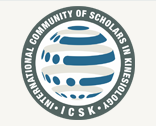Gender-Inclusive Approaches in the Scholarship of Teaching and Learning, Sport and Exercise Science Research, and Practical Applications
Presentation Type
Tutorial Presentation
Abstract
National/international professional organizations in kinesiology have expressed value commitments to becoming gender-inclusive. For example, two of the American College of Sports Medicine’s value statements are to (a) embrace diversity and (b) foster diverse perspectives and participations. Similar guidelines for conducting research have been published and advanced by research collectives, such as the World Health Organization, who in 2023 adopted the SAGER (Sex and Gender Equity in Research) Guidelines. Aligned with these emerging professional standards for inclusive and equitable conduct, this workshop will inform students majoring in the exercise and sport sciences about gender-inclusive barriers in exercise and sport science activities in teaching, research, and practice settings. Finally, students will engage with strategies for creating inclusive protocols to recruit and screen individuals for participation in a training protocol or research study. Following their engagement with ideas and activities of this presentation, students will have met the following learning objectives:
· LO1. Define the terms gender-inclusive teaching and learning.
· LO2. List one method of assessing gender-inclusive teaching and learning.
· LO3. List at least three approaches researchers/editors can incorporate to be gender inclusive when considering conducting/publishing investigations.
· LO4. List at least two classifications of gender-nonconforming individuals and how they identify.
· LO5. List at least one barrier to gender-nonconforming participation in kinesiology research.
Gender-Inclusive Approaches in the Scholarship of Teaching and Learning, Sport and Exercise Science Research, and Practical Applications
National/international professional organizations in kinesiology have expressed value commitments to becoming gender-inclusive. For example, two of the American College of Sports Medicine’s value statements are to (a) embrace diversity and (b) foster diverse perspectives and participations. Similar guidelines for conducting research have been published and advanced by research collectives, such as the World Health Organization, who in 2023 adopted the SAGER (Sex and Gender Equity in Research) Guidelines. Aligned with these emerging professional standards for inclusive and equitable conduct, this workshop will inform students majoring in the exercise and sport sciences about gender-inclusive barriers in exercise and sport science activities in teaching, research, and practice settings. Finally, students will engage with strategies for creating inclusive protocols to recruit and screen individuals for participation in a training protocol or research study. Following their engagement with ideas and activities of this presentation, students will have met the following learning objectives:
· LO1. Define the terms gender-inclusive teaching and learning.
· LO2. List one method of assessing gender-inclusive teaching and learning.
· LO3. List at least three approaches researchers/editors can incorporate to be gender inclusive when considering conducting/publishing investigations.
· LO4. List at least two classifications of gender-nonconforming individuals and how they identify.
· LO5. List at least one barrier to gender-nonconforming participation in kinesiology research.


